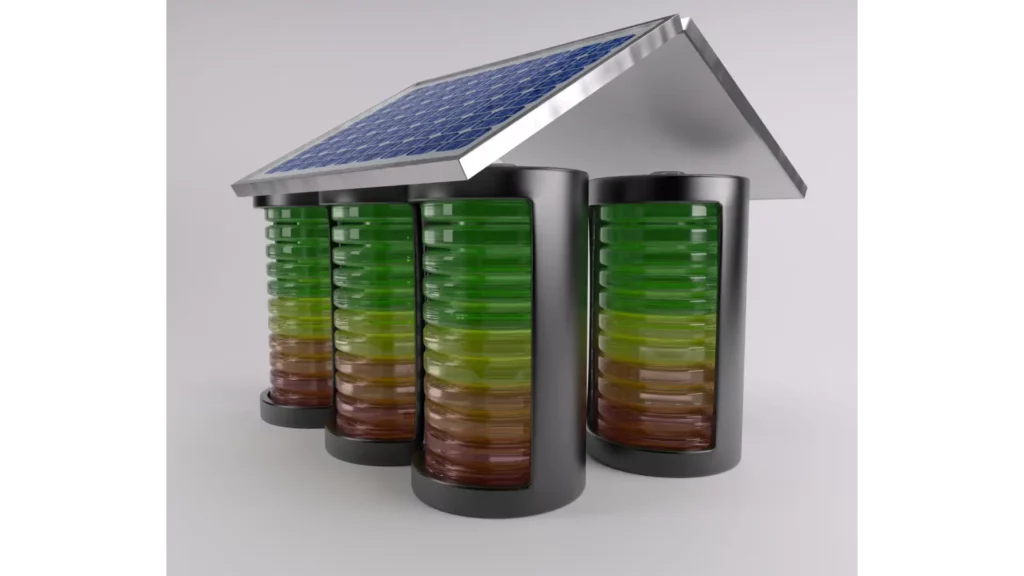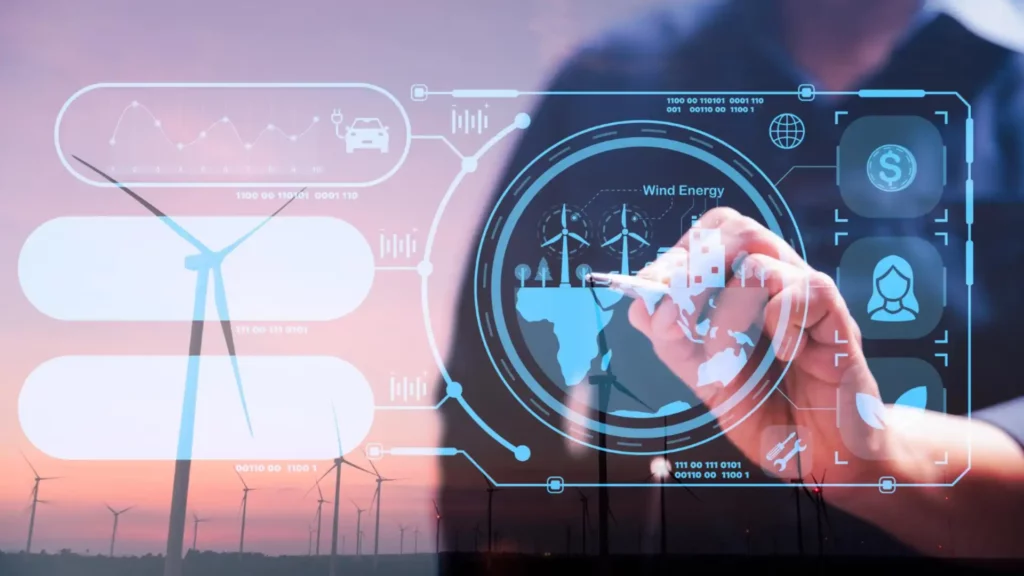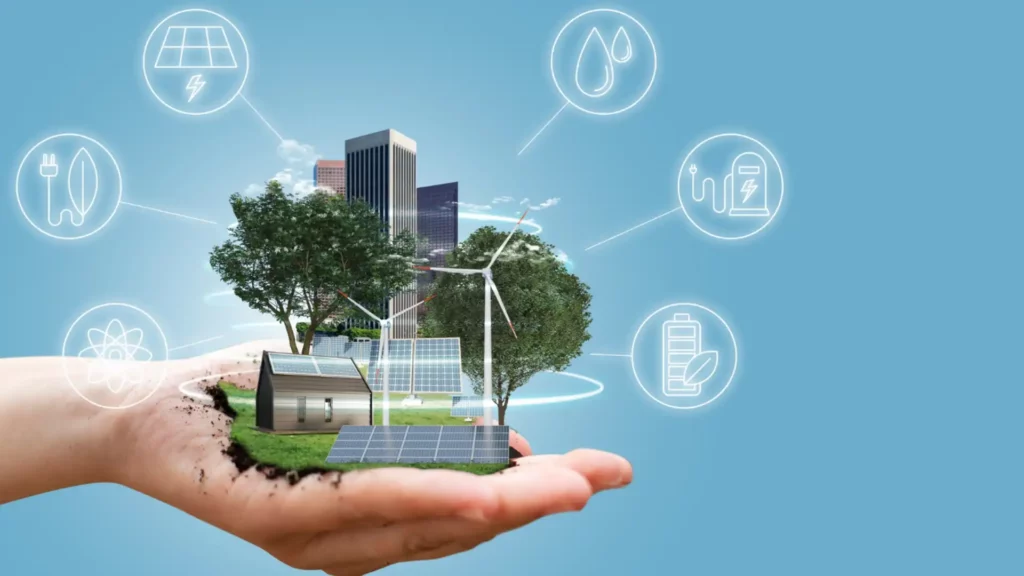As I delve into the vibrant world of energy management and sustainability, I've become acutely aware of the critical importance of energy storage technologies.
My growing interest in renewable energy sources has led me to recognize the pressing need for their efficient and effective storage. This realization has propelled me to explore this field in depth. Through this guide, I aim to share my findings on the diverse energy storage technologies available, examining their workings, applications, strengths, and limitations.
My goal is to offer a clear and comprehensive perspective on how these technologies are shaping the current energy landscape, reflecting my personal journey in understanding their vital role in our transition to sustainable energy solutions.
The Essence of Energy Storage
Comprehensive Overview of Energy Storage
Energy storage involves the capturing and retention of energy produced at one time for utilization at a later point. This concept is pivotal in addressing the intermittency challenges posed by renewable energy sources, such as solar and wind power. These sources often produce energy in an inconsistent and unpredictable manner, dependent on environmental conditions. Energy storage allows for the accumulation of excess energy during periods of high production, such as sunny or windy days. This stored energy can then be released during periods of low production or higher demand, ensuring a continuous and stable energy supply.
Critical Role in Modern Energy Systems
The significance of energy storage transcends basic energy conservation principles. It is a key player in the stabilization of the electrical grid. By providing a buffer against fluctuations in energy supply and demand, energy storage technologies comparison help maintain a balanced and reliable grid. This capability reduces the necessity for peak power plants, which are typically activated only during times of high energy demand and are often less efficient and more expensive to operate.
Furthermore, energy storage minimizes energy wastage by capturing surplus energy that might otherwise be lost. It also plays a crucial role in load leveling – the process of smoothing out the peaks and troughs in electricity demand. This leveling is essential for enhancing the efficiency and reliability of power systems. By mitigating the strain on the grid during peak times and utilizing stored energy during off-peak times, energy storage contributes to a more efficient and cost-effective energy distribution.
As global efforts intensify to transition towards more sustainable and environmentally friendly energy sources, the role of energy storage becomes increasingly prominent. It is a foundational element in this shift, enabling the integration of more renewable energy sources into the grid. This integration is vital for reducing reliance on fossil fuels and curbing greenhouse gas emissions, key factors in combating climate change.

Exploring Different Energy Storage Technologies
Comparison of energy storage technologies has evolved significantly to meet the increasing demands for reliable and sustainable energy solutions. These technologies encompass various methods of storing energy, each with its own advantages and limitations. Here, we delve into the diverse world of energy storage systems, from mechanical storage systems to electrochemical solutions, thermal energy storage, and electrical storage using capacitors and supercapacitors.
Mechanical Storage Systems
Mechanical energy storage represents one of the earliest forms of energy storage, involving the conversion of energy into mechanical form. These systems are typically employed for large-scale applications due to their impressive capacity and scalability.
Pumped Hydroelectric Storage (PHS)
Pumped Hydroelectric Storage stands out as the most prevalent large-scale energy storage method. It operates by shifting water between two reservoirs at varying elevations. During periods of low energy demand, excess electricity is used to pump water to the upper reservoir. As demand surges, the water is released back into the lower reservoir, passing through turbines to generate electricity. PHS is highly efficient and can be scaled to immense capacities, but it is constrained by geographical limitations and poses significant environmental challenges during construction.
Compressed Air Energy Storage (CAES)
Compressed Air Energy Storage relies on compressing air using surplus energy and storing it in underground caverns or tanks. When energy demand peaks, the compressed air is heated and expanded to drive turbines, thereby generating electricity. CAES systems are less dependent on specific locations compared to PHS, offering reasonable efficiency. However, they have lower energy density and necessitate substantial infrastructure investments.
Electrochemical Storage: The Age of Batteries
Electrochemical storage, primarily through various battery types, has gained prominence due to its versatility, accommodating applications ranging from small electronic devices to large power grids.
Lithium-Ion Batteries
Lithium-ion batteries have garnered attention for their remarkable energy density and efficiency, revolutionizing energy storage. Their applications span from powering portable electronics to electric vehicles and large-scale grid storage. These batteries strike a balance between energy density, efficiency, and lifespan, but challenges such as cost, resource availability, and environmental concerns in manufacturing and disposal remain pertinent.
Lead-Acid Batteries
Lead-acid batteries, among the oldest types, remain widely used for their reliability and cost-effectiveness, especially in automotive applications and backup power systems. However, they exhibit lower energy densities and shorter lifespans compared to lithium-ion batteries, with environmental concerns related to their lead content.
Thermal Energy Storage
Thermal energy storage technologies comparison capture energy in the form of heat or cold, allowing for its conversion back into electrical energy or direct use in heating and cooling processes.
Molten Salt Storage
Predominantly employed in concentrated solar power plants, molten salt storage utilizes salts to store heat energy from the sun efficiently. These salts can retain thermal energy at high temperatures, enabling the production of steam and electricity generation when needed. Molten salt storage is particularly effective for ensuring electricity production even when sunlight is unavailable.
Ice Storage
Ice storage air conditioning systems freeze water in tanks during off-peak hours, typically at night, and utilize the ice to cool buildings during peak daytime hours. This strategy alleviates the strain on the electrical grid during peak periods and contributes to lower cooling costs.
Electrical Storage: Capacitors and Supercapacitors
Electrical storage technologies, such as capacitors and supercapacitors, store energy within an electric field. These systems are recognized for their rapid charge and discharge capabilities.
Capacitors
Capacitors serve as short-term energy storage devices and find widespread use in electronic circuits, power conditioning systems, and supplementary storage within renewable energy setups. They offer swift charging and discharging but hold less energy compared to batteries.
Supercapacitors
Supercapacitors, merging the attributes of capacitors and batteries, are suitable for applications requiring rapid bursts of energy. They excel in regenerative braking systems for electric vehicles and providing short-term power boosts in grid systems. Although they possess higher energy densities than traditional capacitors, they still fall behind batteries concerning overall energy storage capacity.

Hydrogen Energy Storage: A Game-Changer in Renewable Energy
The realm of renewable energy is on the cusp of a significant transformation, thanks to the advent of hydrogen energy storage. This groundbreaking technology offers a multifaceted solution for efficiently storing substantial quantities of renewable energy and addressing some of the key challenges associated with intermittent power sources.
At its core, hydrogen energy storage involves the conversion of surplus electricity into hydrogen through the process of electrolysis. This generated hydrogen can subsequently be harnessed in two distinct ways: first, by utilizing fuel cells to produce electricity as needed, and second, by directly employing hydrogen as an exceptionally clean and versatile fuel source. The versatility of hydrogen storage holds immense promise for a multitude of applications, spanning from large-scale, long-term energy storage to powering transportation systems and revolutionizing industrial processes.
One of the standout characteristics of hydrogen energy storage is its remarkable energy density. This attribute allows it to store substantial amounts of energy efficiently, making it particularly well-suited for scenarios where extended energy storage durations are imperative. This capacity to store energy for extended periods addresses a critical issue in renewable energy, as it can help mitigate the intermittent nature of sources like solar and wind power.
Moreover, hydrogen holds the potential to become a game-changer in the transportation sector, offering a clean alternative to fossil fuels and paving the way for zero-emission vehicles and a greener future for mobility. Additionally, its application in industrial processes can substantially reduce carbon emissions, contributing to the global effort to combat climate change.
Detailed Comparison of Energy Storage Technologies
When evaluating various energy storage technologies, it's essential to consider a range of factors to make informed decisions regarding efficiency, cost, lifespan, sustainability, and environmental impact.
Efficiency and Performance
- Pumped Hydroelectric Storage (PHS): PHS stands out for its impressive efficiency, typically ranging from 70% to 80%. Its large capacity makes it suitable for grid-scale energy storage. However, the drawback lies in its substantial spatial requirements and notable environmental impacts, particularly during the construction phase.
- Lithium-Ion Batteries: Lithium-ion batteries offer exceptional energy density and efficiency, rendering them versatile for various applications. They boast high performance levels. Nevertheless, challenges related to cost, resource availability, and concerns regarding environmental impact during manufacturing and disposal are significant considerations.
Cost Considerations
- Lead-Acid Batteries: Lead-acid batteries are known for their low upfront costs, making them attractive for initial investments. However, their shorter lifespan and lower energy density result in higher overall costs over their operational life.
- Molten Salt Storage: Molten salt storage systems necessitate a moderate initial investment. They are primarily deployed in large-scale installations such as solar power plants, where their cost-effectiveness shines.
Lifespan and Sustainability
- Lithium-Ion Batteries: Lithium-ion batteries offer an extended operational lifespan. However, they face challenges related to degradation over time. Recycling and sustainability are critical concerns in their lifecycle management.
- Pumped Hydroelectric Storage: PHS systems enjoy an exceptionally long operational lifespan with minimal degradation, positioning them as a sustainable choice for large-scale energy storage solutions.
Environmental Impact
- Batteries: The environmental impact of batteries extends from their manufacturing processes to their disposal. Although these impacts are substantial, advancements in recycling technologies are steadily improving their ecological footprint, making them more environmentally friendly.
- Pumped Hydroelectric Storage: PHS boasts a relatively low operational environmental impact once constructed. However, it's essential to note that the construction phase can have significant ecological consequences, especially concerning local ecosystems and land use.

Future of Battery Technologies: Beyond Lithium-Ion
The field of advanced battery technologies has witnessed significant progress, marking a departure from the conventional lithium-ion dominance. Researchers and scientists are diligently working towards ushering in a new era of energy storage solutions. One of the most promising breakthroughs in this realm is the emergence of solid-state batteries. These cutting-edge batteries come with the potential to offer higher energy densities compared to their lithium-ion counterparts. Moreover, they are poised to improve safety standards significantly while extending the overall lifespan of energy storage systems.
Another exciting avenue of exploration revolves around sodium-ion batteries, which hold the promise of becoming a more abundant and cost-effective alternative to lithium-ion batteries. This development is particularly noteworthy as it addresses concerns regarding the scarcity of lithium resources and the associated cost implications. Sodium-ion batteries have the potential to offer competitive performance metrics while reducing our dependence on finite lithium supplies.
The implications of these advancements in battery technology are far-reaching. Not only do they hold the potential to revolutionize energy storage, but they also offer significant advantages in terms of efficiency, safety, and environmental sustainability. As these innovations continue to evolve, we can anticipate a future where energy storage solutions are not only more efficient but also more environmentally friendly, paving the way for a greener and more sustainable energy landscape.
Integration of Energy Storage in Smart Grids
The seamless incorporation of energy storage technologies comparison within the framework of smart grids is a pivotal and indispensable facet of contemporary energy management systems. Smart grids, distinguished by their sophisticated communication and control systems, serve as a technological backbone capable of efficiently orchestrating the generation, distribution, and consumption of energy throughout the grid infrastructure
Energy storage, occupying a central and indispensable role within this ecosystem, contributes significantly to grid stability, addresses the variability inherent in renewable energy generation, and enhances the management of peak electricity demand.
This integration of energy storage within smart grids represents a pivotal step toward realizing a more robust, efficient, and sustainable power grid infrastructure. By mitigating the challenges posed by intermittent renewable energy sources and improving load management during periods of high demand, this synergy between energy storage and smart grids sets the stage for a resilient and eco-friendly energy future.

Thermal Energy Storage: Innovations and Expanded Applications
In recent years, the field of thermal energy storage has experienced a remarkable transformation, driven by cutting-edge innovations that go far beyond the conventional applications of heating and cooling.
Notably, breakthroughs in phase change materials (PCMs) and thermochemical storage have ushered in a new era of thermal storage solutions characterized by enhanced efficiency and reduced spatial requirements. These groundbreaking technologies are now extending their influence across diverse sectors, such as industrial processes, concentrated solar power, and residential heating systems, where they are reshaping the landscape of thermal energy management.
Not only do these innovations hold the promise of being eco-friendly, but they also offer cost-effective solutions to address the growing demand for efficient thermal energy storage solutions.
Policy and Market Dynamics Shaping Energy Storage
The ongoing evolution of energy storage technology is intricately intertwined with a multifaceted tapestry of policy and market dynamics. Governments wield substantial influence through the crafting of policies, provision of subsidies, and offering incentives, all of which play pivotal roles in steering the trajectory of research, development, and eventual adoption of energy storage technologies.
Simultaneously, market forces exert their sway, driven by factors such as the surging demand for electric vehicles, the imperative for grid modernization, and the inexorable need for seamless integration of renewable energy sources. Recognizing the intricate dance of these dynamic elements is essential for stakeholders to not only navigate but also capitalize on the myriad opportunities that abound in the ever-evolving energy storage sector.
FAQs on Comparison of Energy Storage Technologies
What is an Energy Storage Technology Review and Why is it Essential?
An energy storage technology review is a comprehensive evaluation of the various technologies used for storing energy. This review typically encompasses an in-depth analysis of different storage methods, their efficiency, costs, applications, and environmental impacts. Conducting an energy storage technology review is essential as it helps stakeholders, including policymakers, investors, and consumers, to understand the current state of energy storage technologies, their potential, and limitations. This understanding is crucial for making informed decisions regarding energy management and investment in renewable energy projects.
How Do Energy Storage Technologies Impact Renewable Energy Integration?
energy storage technologies comparison play a pivotal role in integrating renewable energy into the power grid. They provide a way to store excess energy generated during peak production times (like sunny or windy periods) and release it during periods of high demand or low renewable generation, thus ensuring a steady and reliable energy supply.
Are There Environmental Concerns Associated with Energy Storage Technologies?
Yes, there are environmental concerns associated with certain energy storage technologies. For instance, the production and disposal of batteries can have environmental impacts due to the extraction of raw materials and the handling of waste products. Similarly, large-scale mechanical storage solutions like pumped hydroelectric storage may impact local ecosystems during construction. However, ongoing research and development are focused on minimizing these impacts.
What are the Key Factors to Consider When Choosing an Energy Storage Technology?
When selecting an energy storage technology, several factors should be considered:
- Energy Capacity: How much energy the system can store.
- Power Rating: The speed at which the system can release energy.
- Efficiency: How much energy is lost during storage and retrieval.
- Lifespan: How long the system can operate effectively.
- Cost: Both initial investment and operational costs.
- Environmental Impact: The ecological footprint of the technology.
Can Energy Storage Technologies be Used in Residential Settings?
Yes, certain energy storage technologies, particularly batteries like lithium-ion, are suitable for residential use. They can store energy from rooftop solar panels, providing power during outages or periods when solar panels aren't producing electricity. These systems can also help homeowners reduce energy costs by storing electricity when rates are low and using it when rates are high.
How Can I Find Reliable Information for an Energy Storage Technology Review?
To find reliable information for an energy storage technology review, it is recommended to refer to scholarly articles, industry reports, and publications from reputable organizations in the energy sector. Governmental energy departments and independent energy research institutions often publish comprehensive reviews and updates on energy storage technologies. Additionally, academic journals and conferences focusing on renewable energy and technology also provide valuable insights. It’s important to ensure that the information is current and comes from credible sources to get an accurate understanding of the evolving landscape of energy storage technologies.
What Key Aspects are Typically Covered in an Energy Storage Technology Review?
An energy storage technology review typically covers several key aspects:
- Types of Energy Storage: Different technologies like batteries (lithium-ion, lead-acid), mechanical storage (pumped hydro, compressed air), thermal storage, and emerging technologies.
- Performance Metrics: This includes efficiency, capacity, charge/discharge rates, lifespan, and reliability of different storage technologies.
- Economic Viability: Analysis of costs involved in implementation, maintenance, and scalability of storage solutions.
- Environmental Impact: Assessing the ecological footprint, sustainability, and recycling capabilities of various storage systems.
- Market Trends and Future Outlook: Current market dynamics, emerging innovations, and potential future developments in energy storage technologies.
Comparison of Energy Storage Technologies Conclusion
In reflecting on the advancements in energy storage technologies, I am filled with optimism and a sense of responsibility towards our planet's future. The evolution from traditional methods like Pumped Hydroelectric Storage to innovative solutions like advanced batteries and hydrogen storage underscores a significant shift towards more efficient and sustainable energy management. This progress, vital for integrating renewable energy into our daily lives, resonates deeply with my commitment to sustainable living and environmental stewardship.
The integration of these technologies into smart grids and the breakthroughs in thermal energy storage are not just technical achievements; they represent a reimagining of how we interact with energy. As someone passionate about our planet's health, the role of policy and market dynamics in shaping these developments serves as a reminder of our collective duty. It inspires me to be an active participant in this journey, supporting and advocating for a future where our energy needs are met in harmony with the environment, laying the foundation for a cleaner, more sustainable world.

